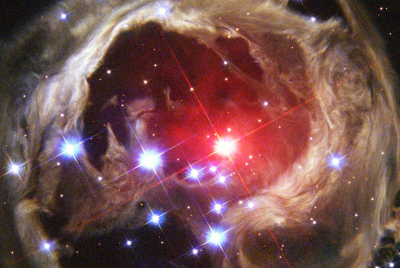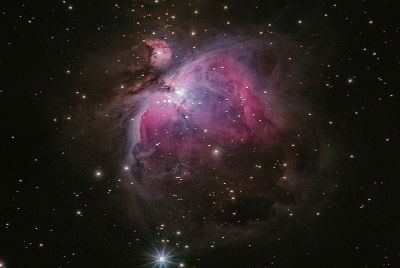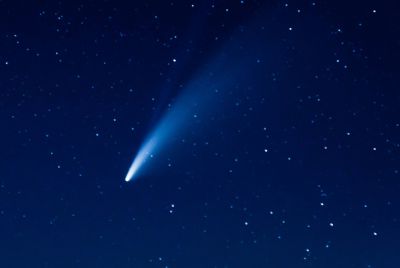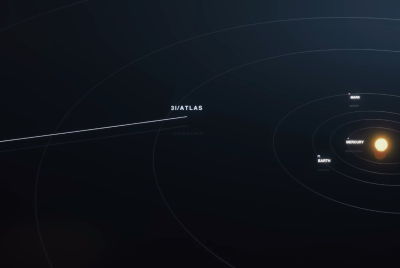Wildlife Photographer of the Year 2014: Winning Images and Finalists
The winners of the 2014 Wildlife Photographer of the Year competition were announced at a gala event at the Natural History Museum attended by Kate Middleton.
Michael "Nick" Nichols of the US has been named Overall Wildlife Photographer of the Year 2014 for his photo, The Last Great Picture, depicting the five females of the Vumbi pride lying at rest with their cubs on a kopje (a rocky outcrop), in Tanzania's Serengeti.
He photographed them in infrared, which he says "cuts through the dust and haze, transforms the light and turns the moment into something primal, biblical almost". A few months later, he heard that the pride had ventured into land beyond the park and that three females had been killed.
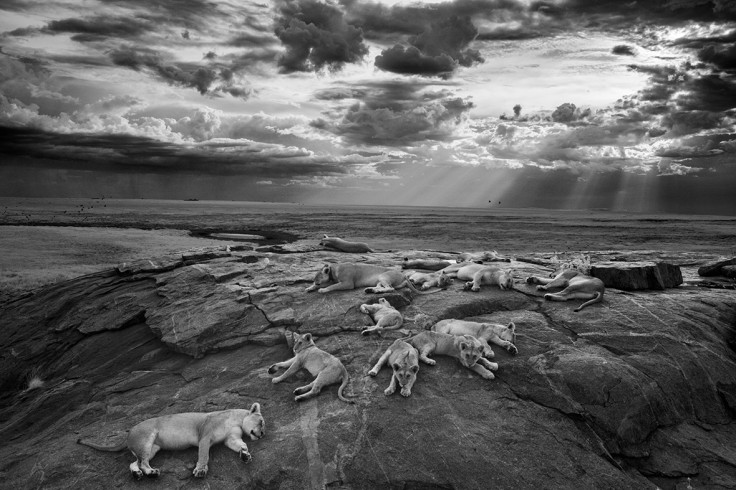
Francisco Negroni of Chile won the Earth's Environments category with his image of volcanic lightning, entitled Apocalypse.
After the Puyehue-Cordón Caulle volcanic complex began erupting, Negroni travelled to Puyehue National Park in southern Chile. He watched as flashes of lightning lacerated the sky and the glow from the molten lava lit up the smoke billowing upwards and illuminated the landscape. "It was the most incredible thing I have seen in my life," he said.
Volcanic lightning (also known as a "dirty thunderstorm") is a rare, short‑lived phenomenon probably caused by the static electrical charges resulting from the crashing together of fragments of red‑hot rock, ash and vapour high in the volcanic plume.
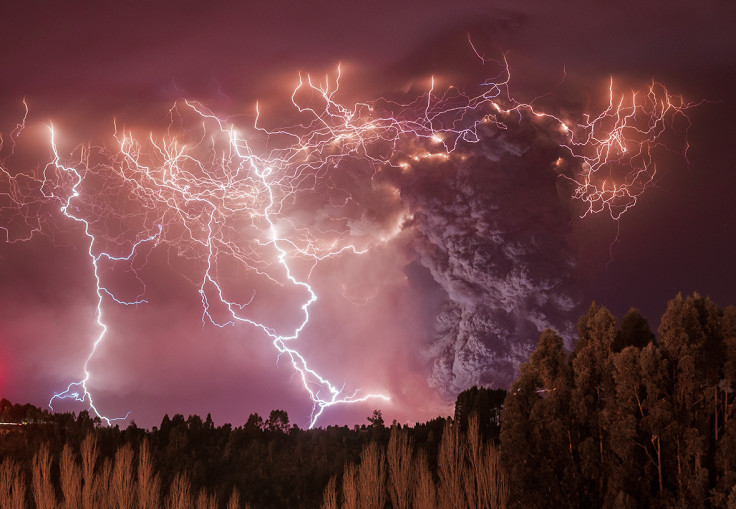
Bruno D'Amicis of Italy won the World in our Hands category with his photo, called The Price They Pay.
A teenager from a village in southern Tunisia offers to sell a three-month-old fennec fox, one of a litter of pups he dug out of their den in the Sahara Desert.
Catching or killing wild fennec foxes is illegal in Tunisia but widespread, which D'Amicis discovered as part of a long-term project to investigate the issues facing endangered species in the Sahara.
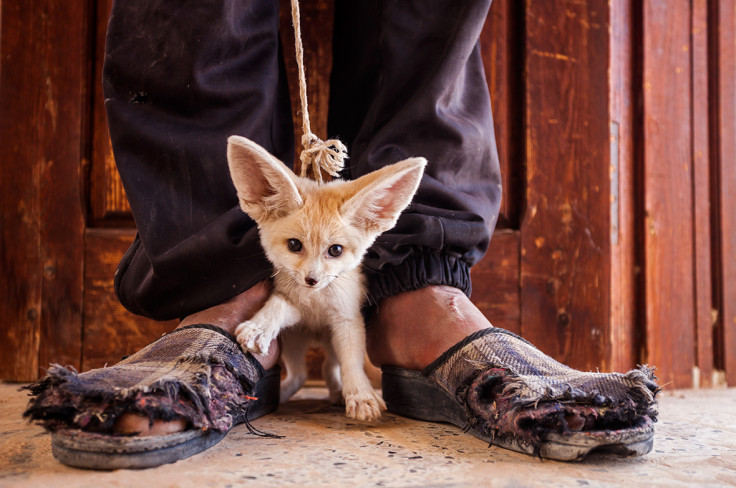
Rodrigo Friscione Wyssmann of Mexico was named as a finalist in the World in our Hands category for his photo, The Longline Lottery.
Wyssmann came upon the grim sight off Magdalena Bay on the Pacific coast of Baja California, Mexico, after noticing a fisherman's buoy had been dragged below the surface by a considerable weight. The hook was on a long line of hooks, set to catch blue and mako sharks.
"'I was deeply shocked. Great whites are amazing, graceful and highly intelligent creatures. It was such a sad scene that I changed the image to black and white, which felt more dignified," he said.
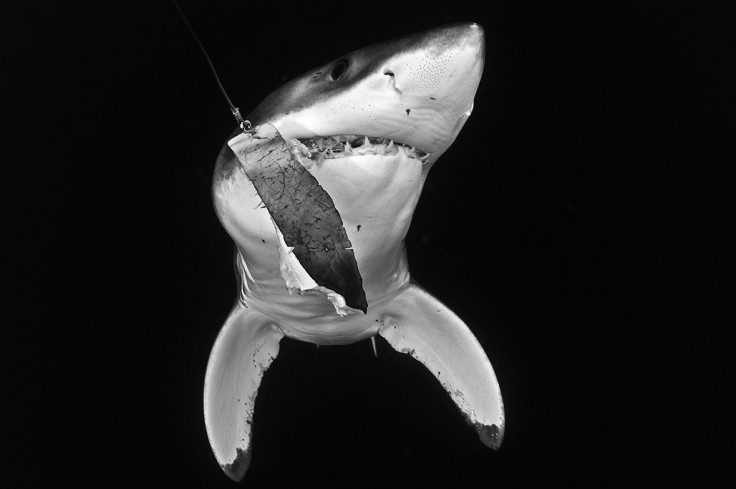
Jan van der Greef from the Netherlands was a finalist in the Birds category for this photo, called Touché.
A focus of Jan's trip to Ecuador was the astonishing sword-billed hummingbird – the only bird with a bill longer than its body (excluding its tail). Its 11cm (4.3in) bill is designed to reach nectar at the base of equally long tube-shaped flowers, but Van der Greef discovered that it can have another use.
One particular bird uses its bill "to make a statement" when crossing the territory of a fiercely territorial collared inca. To capture one of these stand-offs, Van der Greef set up multiple flashes to freeze the hummingbirds' wing-beats – more than 60 a second – and finally captured the precise colourful moment.
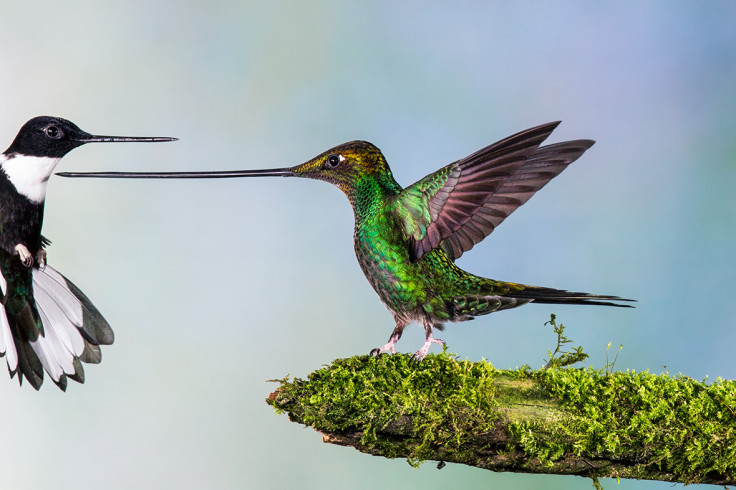
Fabien Michenet of France has been named as a finalist in the Underwater Species category for Little Squid.
Night-diving in deep water off the coast of Tahiti and surrounded by a mass of tiny planktonic animals, he became fascinated by this juvenile sharpear enope squid.
Just 3cm (an inch) long, it was floating motionless about 20m (66ft) below the surface, probably hunting even smaller creatures that had migrated up to feed under cover of darkness. Its transparent body was covered with polka dots of pigment-filled cells, and below its eyes were bioluminescent organs.
Knowing it would be sensitive to light and movement, Michenet gradually manoeuvred in front of it, trying to hang as motionless as his subject. Using as little light as possible to get the autofocus working, he finally triggered the strobes and took the squid's portrait before it disappeared into the deep.
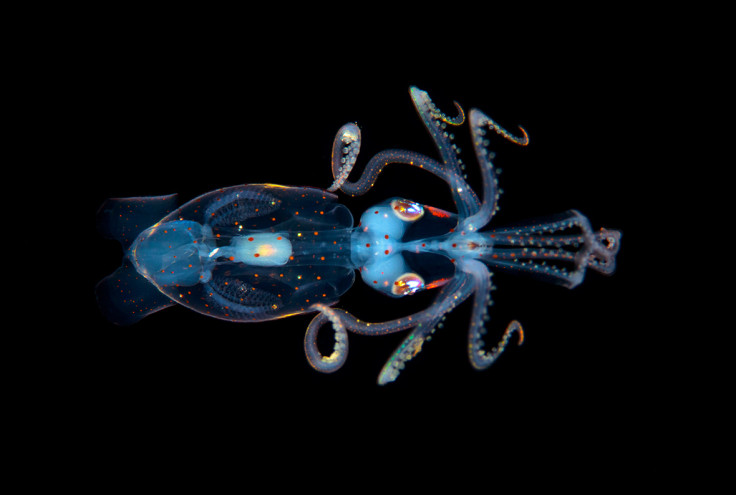
Carlos Perez Naval from Spain was named winner of the 10 Years and Under category, and Overall Young Wildlife Photographer of the Year for Stinger in the Sun.
Aware of Carlos's presence, the common yellow scorpion is flourishing its sting as a warning. Carlos had found it basking on a flat stone in a rocky area near his home in Torralba de los Sisones, north-east Spain. Carlos decided to experiment with a double exposure (his first ever) so he could include the sun.
He started with the background, using a fast speed so as not to overexpose the sun, and then shot the scorpion, using a low flash.
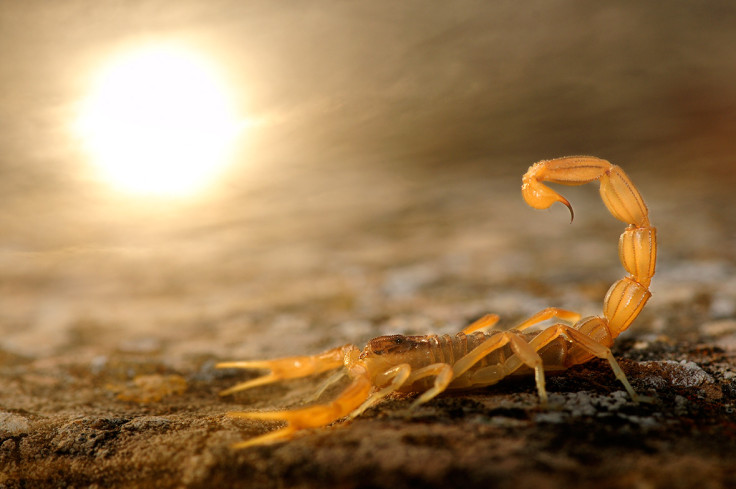
Will Jenkins, United Kingdom, was a finalist in the 11 to 14 Years category for his photo, Green Dragon.
Relaxing at the hotel at the end of a Costa Rican family holiday, Will spotted a green iguana as it jumped down from the hotel roof and grabbed his camera.
Selecting a wide aperture to make his subject stand out, Will carefully focused on its eye.
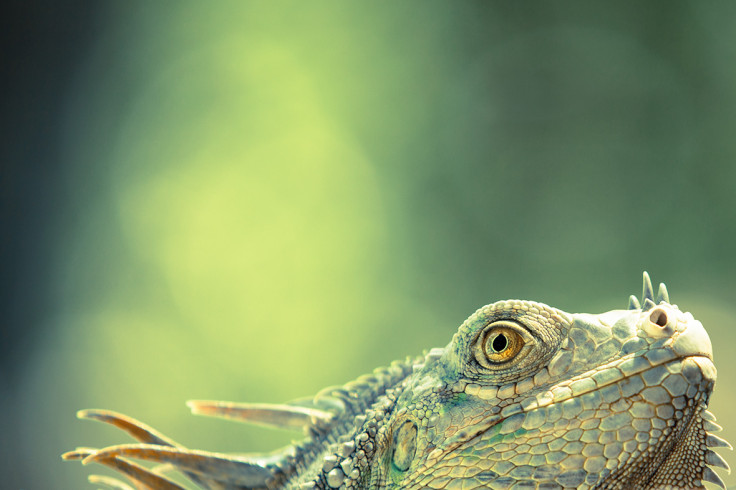
Anton Lilja of Sweden won the 15 to 17 Years category for The Long Embrace.
The moment her eggs make contact with water, the jelly around them will begin to swell. So a female frog needs to have a male nearby, ready to fertilise the eggs the instant they leave her body. And a male needs to hold on to her to make sure he's the one doing the fertilising.
So he grasps her in a tight embrace, known as amplexus, often for days, until she has laid her eggs.
Hearing masses of common frogs were gathering in a flooded gravel pit near his home in Västerbotten, Sweden, Anton set out to photograph the mating spectacle. Lying down on the bank at eye level with the water, he became fascinated by the light bouncing off the spawn and the water.
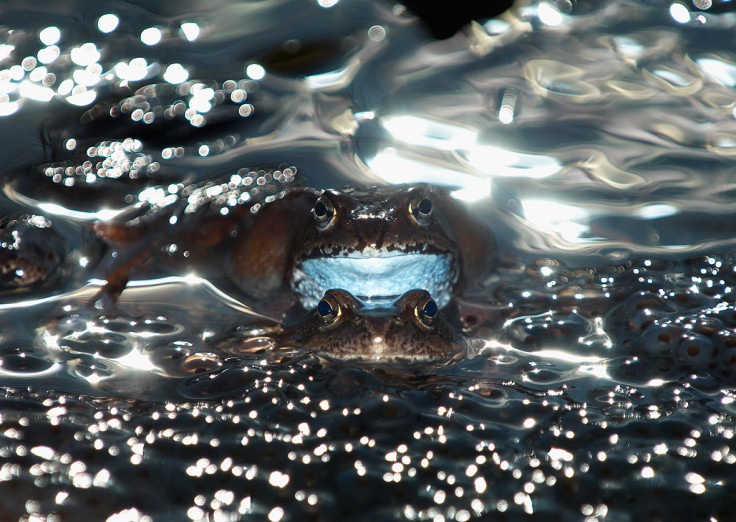
Edwin Sahlin of Sweden was a finalist in the 15 to 17 Years category for his photo called Snowbird.
Cheese and sausage are what Siberian jays like – so Edwin discovered on a skiing holiday with his family in northern Sweden. Whenever they stopped for lunch, he would photograph the birds that gathered in hope of scraps.
While his family ate their sandwiches, Edwin dug a pit in the snow deep enough to climb into. He scattered titbits of food around the edge and then waited. The jays flew right over him, allowing him to photograph them from below and capture the full rusty colours of their undersides more clearly than he had dared hope.
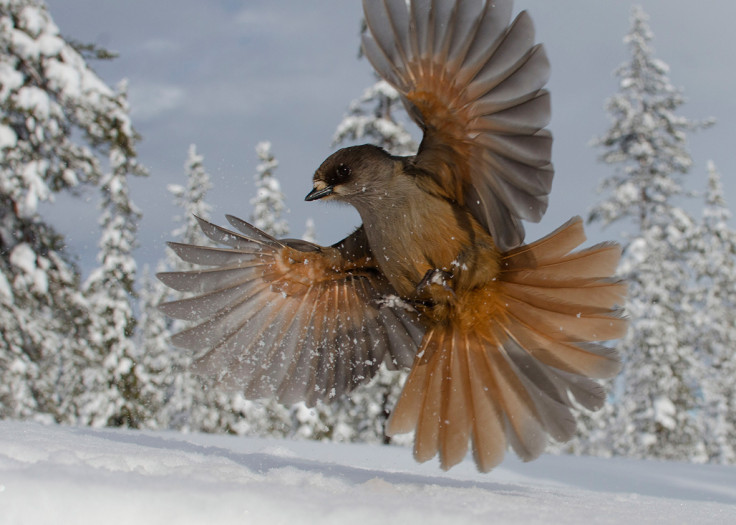
These photos are among the 100 going on show at the Natural History Museum from 24 October 2014 to 30 August 2015.
This is the 50th year of the Wildlife Photographer of the Year competition, which is co-owned by the Natural History Museum and BBC Worldwide.
© Copyright IBTimes 2025. All rights reserved.







